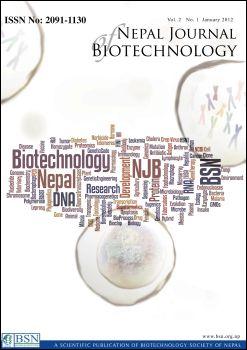An Overview of Computational Approaches in Structure Based Drug Design
DOI:
https://doi.org/10.3126/njb.v2i1.5680Keywords:
computer aided drug design, structure based drug design, Ras-proteinAbstract
Drug design is a costly and difficult process. Drug must fulfill several criteria of being active, nontoxic and bioavailable. The conventional way of synthesizing drugs is a monotonous process. But computer aided drug design is a proficient way to overcome the tedious process of conventional method. Drugs can be designed computationally by structure or target based drug designing (SBDD). This review summarizes the methods of structure based drug design, usage of related softwares and a case study that explores to find a suitable drug (lead) molecule for the mutated state of H-Ras protein in order to prevent complex formation with Raf protein.
Keywords: computer aided drug design; structure based drug design; Ras-protein
DOI: http://dx.doi.org/10.3126/njb.v2i1.5680
Nepal Journal of Biotechnology Jan.2012, Vol.2(1): 53-61
Downloads
Downloads
How to Cite
Issue
Section
License
Copyright Notice:
The manuscript submitted to NJB must be an original contribution, not previously published and should not be under consideration for publication elsewhere. When the manuscript is accepted for publication, the authors agree to automatically transfer the copyright of the article to the publisher. It should grant permission to any third party, in advance and in perpetuity, the right to use, reproduce or disseminate your article, according to the NJB copyright and license agreement.
Authors transfer copyright to the publisher as part of a journal publishing agreement but have the rights to: Share their article for Personal Use, Internal Institutional Use and Scholarly Sharing purposes, with the NJB applies the Creative Commons Attribution-NonCommercial CC BY-NC license to all the works we publish after Jun 2020 (Before it was CC BY-NC-ND). Under this license, authors agree to make articles legally available for reuse, without permission or fees, for virtually any non-commercial purpose. Anyone may remix, adapt, and build upon your work non-commercially, and although their new works must also acknowledge you and be non-commercial, they don’t have to license their derivative works on the same terms. More details on CC BY-NC refer to its Licence Deed and Legal Code.






